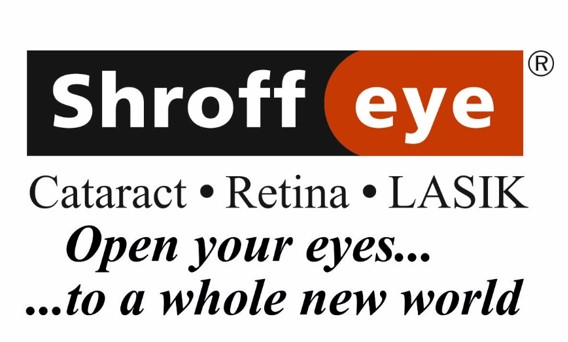Shroff Eye Hospital is India's First Eye Hospital accredited by the Joint Commission International (USA) since 2006. Shroff Eye is also India's first and only Wavelight Concerto 500 Hz LASIK center. Shroff Eye has stood for excellence in eye care since 1919. A firm commitment to quality is at the heart of all services provided at our centers at Bandra(W) and Marine Drive, Mumbai.
What eye problems are more common in journos [occupational hazards]?
What to expect in an eye check up?
Recent international research suggests screen-based work can have short-term but potentially serious effects on eyesight.
This is old news to the UK’s 5.5 million hardened VDU users. A survey by Dollond and Aitchison, Europe’s largest optical group, found over 70 per cent of those questioned expressed concerns that prolonged VDU work could affect their eyesight. Four out of every ten who used computers stated that they had experienced sore eyes from staring at computer screens for too long. A recent study found that 68% of the computer users in Info tech in Bangalore suffered from “dry eye syndrome”
and respondents to the survey indicated that screen-related eyestrain was up by 29 per cent since 1992.
It is the temporary visual effects, recently confirmed in US research, that can cloud the vision for most of the waking – working – hours of an over-stretched employee.
VDU-related temporary visual impairment in now an officially recognised occupational health problem in the US.
The Ophthalmologists have labelled the condition “computer vision syndrome” (CVS).
CVS can include any or all of the following symptoms:
- Temporary myopia, the inability to focus clearly on distant objects for a few minutes to a few hours after using the computer.
- Eyestrain or eye fatigue, a tired, aching heaviness of the eyelids or forehead.
- Blurred vision for near or far objects, and sometimes double vision or after images.
- Dry, irritated or watery eyes.
- Increased sensitivity to light.
- Headaches, neckaches, backaches and muscle spasms from holding the body in awkward positions to maintain a desirable angle between eyes and screen.
- Poor position in relation to the computer.
- Lighting that produces glare or reflections, fuzzy images or images that are too dim or too bright.
- Failure to blink often enough to moisten the surface of the eyes.
- Use of corrective lenses that are inappropriate for the user’s position and distance from the screen.
- Minor visual defects that might go unnoticed if not exaggerated by intense computer use.
- Any windows should be at right angles to the computer screen, rather than behind it or in front of it.
- There should be enough light to read the words on the screen without straining.
- There should be no reflections on the screen from overhead lights, windows or desk lamps.
- The screen contrast should be adequate to produce sharply defined images.
A number of workplace factors can lead to CVS:
Unnoticed eyesight flaws that had caused no problems previously can become very troublesome when a person becomes a VDU user.
Experts now accept a reduced blink rate in screen workers can explain reports of dry or irritated eyes.
“Concentrating on the screen can cause your blink rate to slow, which means that your natural tears are not able to lubricate your eyes as normal, leaving you with ‘dry eye’ symptoms.”
People naturally try to look down at a computer screen at an angle of 10-20 degrees. Dr Shroff warns that if the screen is at or above eye level, the tendency is to tilt the head back to achieve the desired viewing angle, and that can cause stiff necks and backaches.
People who wear bifocals or progressive (variable focus) lenses are forced to tilt their heads back to see the screen at all. Even with a head tilt, Dr Shroff says, the image is not as clear as it could be because the prescription typically issued for a reading lens is adjusted for an eye-to-page distance of 16 inches at an angle of 25 degrees, but computer screens are usually 20-24 inches away at an angle of 10-15 degrees.
Other problems
Swedish researchers have found that screen flicker has been implicated in the development of electrical hypersensitivity, which can lead to symptoms including nausea, skin reddening, smarting or tingling, and aches, chills or fever.
Safe at a glance
To work safety at a video display screen, check these points:
Other factors, including rest breaks, the 20-20-20 rule and office conditions – particularly humidity – we recommend an office humidity level of 40-60 per cent.
You need your eyes testing!
The Shroff Eye Group is urging VDU users such as journalists, those working in corporate offices, Banks etc to take up their eye test. Launching a “use them or lose them” theme.
Dr Anand Shroff will talk on such various eye problems and how to avoid them.






